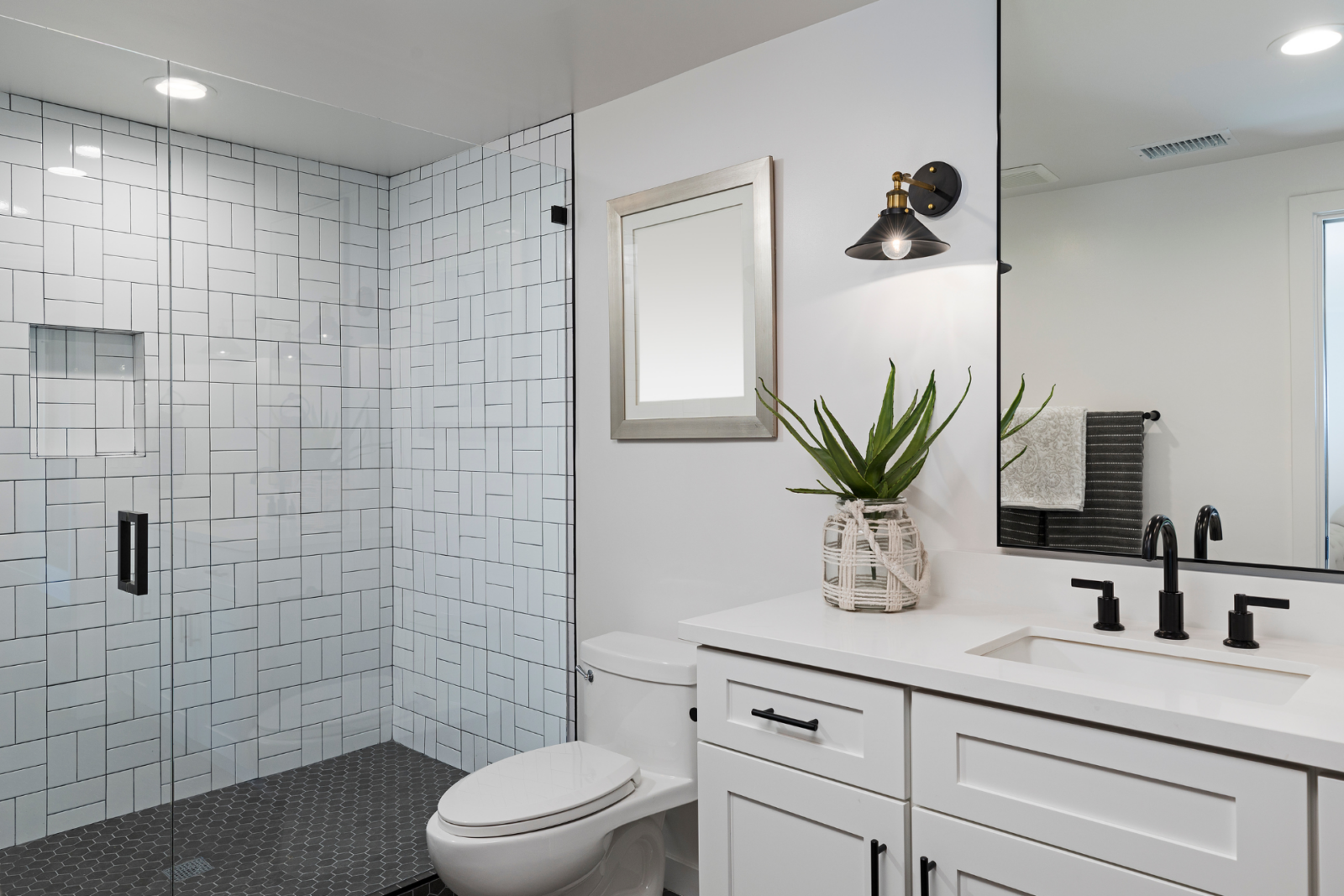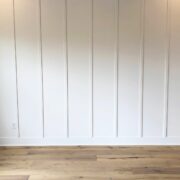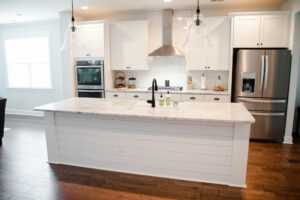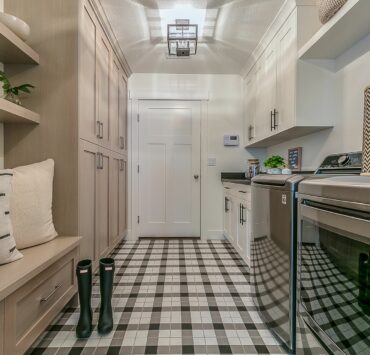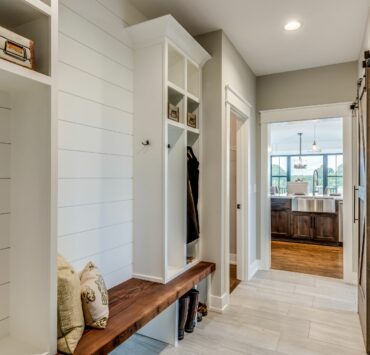Have you ever asked yourself, “Can we convert a powder room to full bath?” or “Can I turn a half bath into a full bath?” If so, you’re not alone. Many homeowners are looking for ways to increase the value and functionality of their homes by converting their powder rooms into full bathrooms. The good news is that it’s entirely possible, and with the right planning, you can bring your vision to life. On average, the cost to convert a half bath to a full bath ranges between $25,000 and $35,000, depending on factors such as materials, labor, and location. One of the main considerations when undertaking this project is whether you can fit a shower in the powder room. In this comprehensive guide, we’ll walk you through the process of how to convert a powder room to a full bath, step by step.
Assessing the Space
Determine the Available Space
The first step in converting a powder room to a full bath is to determine if you have enough space for a shower or a bathtub. Typically, a full bath requires at least 36 to 40 square feet of space. Measure your existing powder room to see if it meets these requirements or if you need to expand the room by removing or shifting walls.
Check Plumbing and Electrical Systems
Before moving forward with the conversion, assess the existing plumbing and electrical systems in the powder room. Ensure that there is adequate water supply and drainage for the new fixtures, as well as sufficient electrical capacity for additional lighting, ventilation, and any other appliances you may want to add.
Designing the New Full Bath
Plan the Layout
When designing the new full bath, consider the placement of the toilet, sink, and shower or bathtub. Be mindful of the space needed for doors to open and close, as well as room for movement and storage. It’s crucial to maintain a functional layout that meets building codes and feels comfortable to use.
Choose Fixtures and Finishes
Select the fixtures and finishes for your new full bath, taking into account your style preferences and budget. High-quality materials may be more expensive, but they can increase the value of your home and provide a more luxurious experience. Consider coordinating the finishes on the fixtures, such as faucets, towel bars, and lighting, for a cohesive look.
Preparing for Construction
Obtain Permits and Inspections
Before beginning construction, ensure you have the necessary permits and inspections required by your local building department. This may involve submitting plans and paying fees, so plan accordingly to avoid delays.
Hire a Contractor or DIY
Decide whether you will hire a contractor to complete the conversion or tackle it as a DIY project. Hiring a contractor can be more expensive but may save you time and ensure a professional result. If you choose to DIY, make sure you have the skills and knowledge to do the job safely and correctly.
Construction and Installation
Demolition and Expansion
Begin by carefully removing any existing fixtures and finishes in the powder room. If you need to expand the space, remove or shift walls as necessary. Be cautious of any electrical or plumbing lines that may be hidden behind the walls to avoid damage or accidents.
Plumbing and Electrical Updates
Update the plumbing and electrical systems as needed to accommodate the new fixtures and appliances. This may involve rerouting pipes, installing new drainage lines, or adding electrical outlets and wiring. Consult with a licensed plumber or electrician if you are unsure about any aspect of this process.
Install Fixtures and Finishes
Once the plumbing and electrical updates are complete, begin installing the fixtures and finishes, such as the bathtub or shower, toilet, sink, and vanity. Make sure everything is level, secure, and properly connected to the plumbing and electrical systems. Install any additional features like towel bars, mirrors, and lighting.
Flooring, Walls, and Ventilation
After the fixtures are in place, install flooring and wall materials that are suitable for a bathroom environment. This may include tile, waterproof wall panels, or moisture-resistant paint. Don’t forget to ensure proper ventilation by installing a bathroom exhaust fan if you don’t already have one.
Finishing Touches and Inspection
Clean and Inspect
Thoroughly clean the new full bath, removing any construction debris and dust. Inspect all fixtures, connections, and finishes to ensure they function properly and are free of defects. Address any issues or concerns before considering the project complete.
Decorate and Accessorize
Finally, add your personal touch to the new full bath by decorating and accessorizing the space. Consider adding items like shower curtains, bath mats, artwork, and storage solutions to make the bathroom both functional and stylish.
Frequently Asked Questions About How to Convert Powder Room to Full Bath
Q: How much does it cost to convert a powder room to a full bath?
A: The average cost to convert a half bath to a full bath ranges between $25,000 and $35,000, depending on factors like materials, labor, and location.
Q: Can you put a shower in a powder room?
A: Yes, you can install a shower in a powder room as long as you have enough space and the necessary plumbing and drainage in place.
Q: How much space do I need for a full bath?
A: A full bath typically requires at least 36 to 40 square feet of space to accommodate a shower or bathtub, toilet, and sink.
Q: Do I need a permit to convert a powder room to a full bath?
A: Yes, you will likely need a permit from your local building department before undertaking a bathroom conversion project. This may involve submitting plans and paying fees, so plan accordingly.
Q: Can I convert a powder room to a full bath by myself, or do I need to hire a contractor?
A: You can choose to tackle the project as a DIY endeavor if you have the skills and knowledge to do the job safely and correctly. However, hiring a contractor can save you time and ensure a professional result.
Additional Tips for a Successful Conversion
Tip 1: Establish a Realistic Budget
Before starting the conversion process, establish a realistic budget that includes all necessary materials, labor, and any unexpected expenses that may arise. This will help you stay on track and avoid overspending.
Tip 2: Plan for Storage
When designing your new full bath, be sure to include ample storage solutions to keep the space organized and clutter-free. This may include built-in shelves, cabinets, or even utilizing vertical space with wall-mounted storage.
Tip 3: Opt for Space-saving Fixtures
If you have limited space in your powder room, consider using space-saving fixtures like wall-mounted toilets, corner sinks, or compact shower enclosures to make the most of the available area.
Tip 4: Invest in Energy-efficient Features
To save on energy costs and create a more eco-friendly bathroom, consider installing energy-efficient features like LED lighting, low-flow faucets, and water-saving showerheads.
Tip 5: Be Mindful of Bathroom Safety
Ensure that your new full bath is safe and user-friendly by installing slip-resistant flooring, grab bars, and properly grounded electrical outlets near water sources.
Conclusion
By following this step-by-step guide on how to convert a powder room to a full bath, you can enhance the value and functionality of your home. It may be a significant investment in terms of time and money, but the result is a beautiful and practical space that serves the needs of your household for years to come. Remember to plan carefully, obtain the necessary permits, and consult with professionals when needed to ensure a successful conversion. Happy remodeling!
